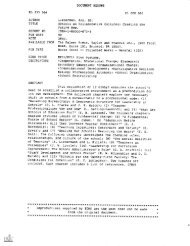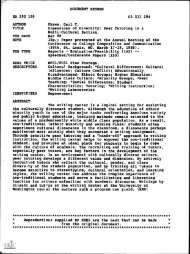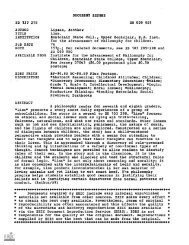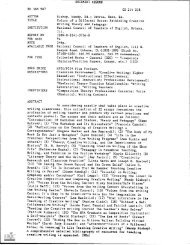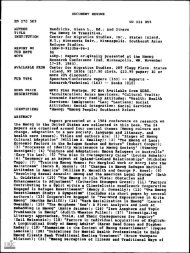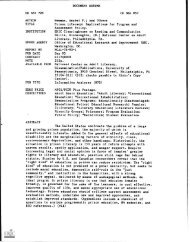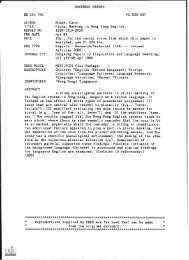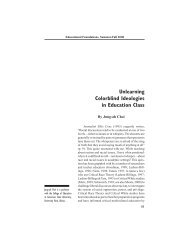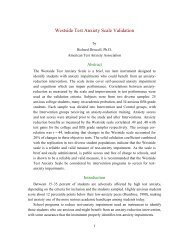Higher Education and Employment: An International Comparative ...
Higher Education and Employment: An International Comparative ...
Higher Education and Employment: An International Comparative ...
Create successful ePaper yourself
Turn your PDF publications into a flip-book with our unique Google optimized e-Paper software.
<strong>Higher</strong> <strong>Education</strong> <strong>and</strong> <strong>Employment</strong>anent of higher education. It is in this way that population characteristics doaffect education <strong>and</strong> manpower planning. The participation rates by age,sex, <strong>and</strong> home background would provide useful indications for formulatingdevelopment policies of education.If the country had a social <strong>and</strong> economic development strategy itseffect on educational development could be identified by the share of thebudget for education. The skills needed for the development of the country<strong>and</strong> its regions could also be identified from the development strategy, thusindicating new training needs. Estimates could be based, for instance, onregional potentials for development <strong>and</strong> the available infrastructure. Fromthe description of the development policies one can identify the kind oftraining activities that would have to be provided by the education system.From the inventory of training needs one can then go on to analyse thepotential responsive capacity of the education system, showing its strengths<strong>and</strong> weaknesses. This diagnostic analysis can involve identifying the factorsaffecting past developments <strong>and</strong> comparing them to the objectives set inthe development strategy mentioned above. The influence of the socioeconomiccharacteristics of different groups of people on the developmentof education is also identified. Rates of wastage can be estimated <strong>and</strong>reasons identified, so as to reduce them. One can also compare thedevelopment of different facilities of the education system to the enrolmentgrowth, in order to check for the quality of instruction. <strong>An</strong> analysis of thevalidity of the examination system can be made by checking the scores withthe performance at work in the case of school-leavers. A correlation analysiscan also be made, to find the relation between educational performance<strong>and</strong> performance on the job. However, such an analysis has to be brokendown into the different socio-economic characteristics of the studentpopulation, because not only formal education but other characteristicsinfluence performance as well.<strong>An</strong>alysis of cost per student, both social <strong>and</strong> private, is important, notonly to check the economic efficiency of an educational programme but alsoto find ways to reduce this cost where it is unreasonably high. Thediagnostic analysis of the operation of the present education systemprovides the basis for outlining its future development pattern. The futuredevelopment strategy has to ;.ake into account the employability of thegraduates, which is calculated on the basis of estimates of needs for trainedskills. Manpower forecasts alone are not reliable estimates, as one can onlymake rough guesses as to the kinds of abilities they will involve. However,an analysis of the effectiveness of the manpower plans does become usefulat this stage, as it provides the analyst with data on their unreliability <strong>and</strong>the extent to which other measures are needed. To assess the employabilityof different types of graduates one has to analyse the structure of theexisting labour force, the pattern of employment (including recruitment<strong>and</strong> promotion practices), the wage policy, labour productivity, <strong>and</strong> growthrates in the different economic sectors as well as the policy of employment2231



